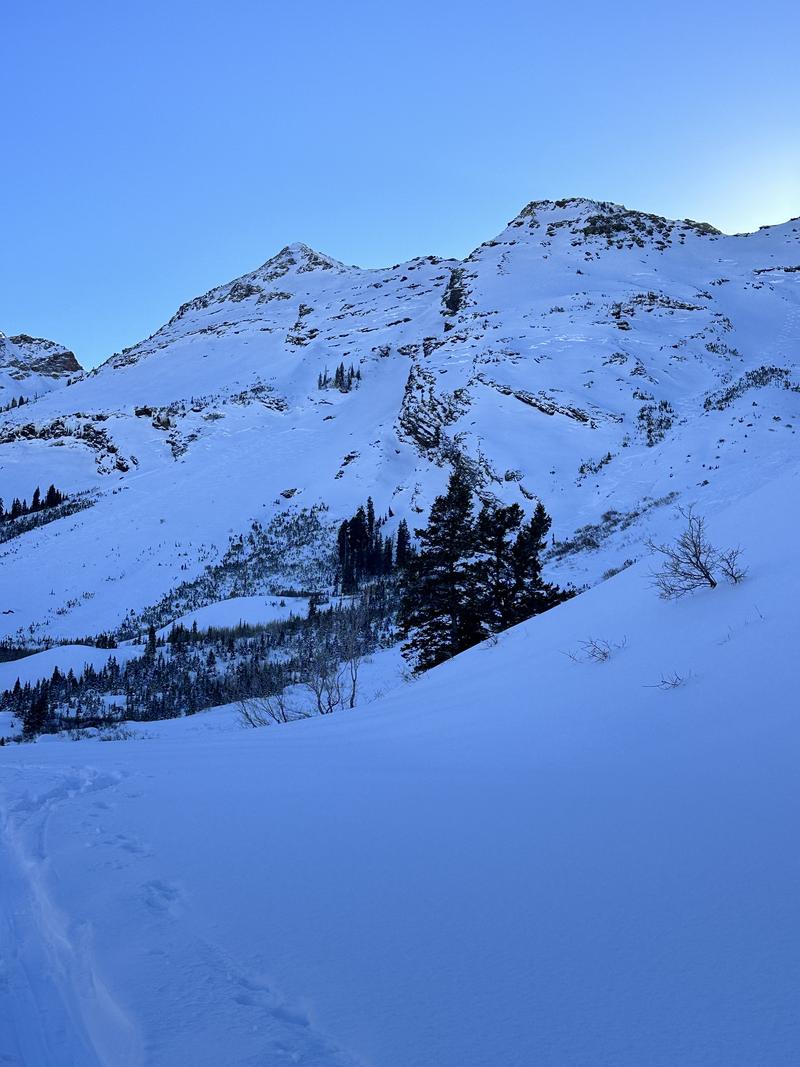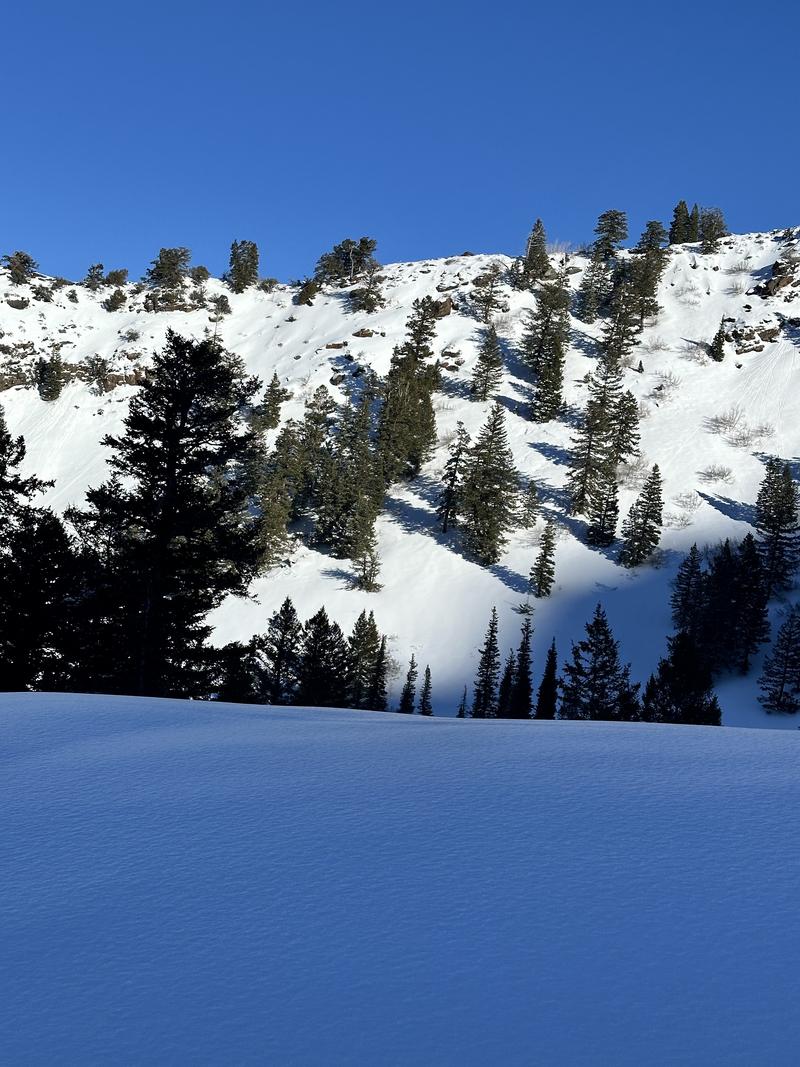We headed out to Broads to assess coverage in some of the lower terrain options, like Broads Trees. Unfortunately, we encountered generally low coverage and challenging travel conditions in Broads Trees, so we continued up the drainage toward the Diving Board and Bonkers, where we found better coverage and easier travel.
We did not observe any signs of instability, but the snow surface was weakening. With almost no wind in the drainage, it’s likely the surface hoar will continue to grow until the next period of low pressure.
We dug two pits near 8,200 feet—one on a true east-facing aspect and one on a northeast-facing aspect. The primary and somewhat surprising difference between the two profiles was the snow depth. On the true east-facing aspect, the snowpit depth was 125 cm, whereas the northeast-facing pit had a depth of only 90 cm, along with a more obvious rime layer from the system that passed between Christmas and New Year’s. Beyond that, both snowpits displayed a similar structure, with varying hardness from 4-Finger to 1-Finger slabs sitting atop weak, faceted snow.
Neither snowpit showed propagation, which was surprising given the snowpack structure. Additionally, neither pit indicated any signs of healing within the basal facets - facets were 2-3mm in both pits, not damp, and no signs of rounding.
Snowpit profile from the East facing terrain - 8293'
Snowpit profile from NE aspect at 8260'








